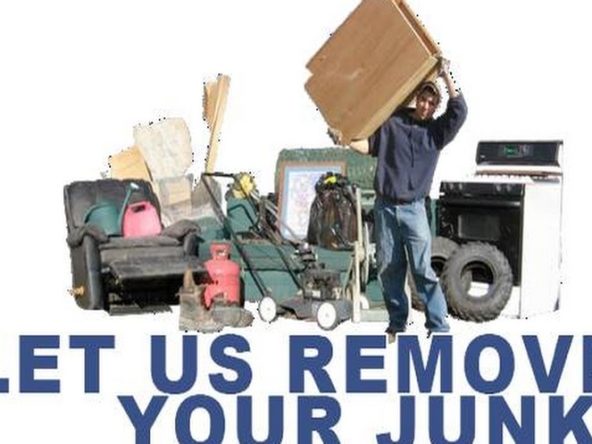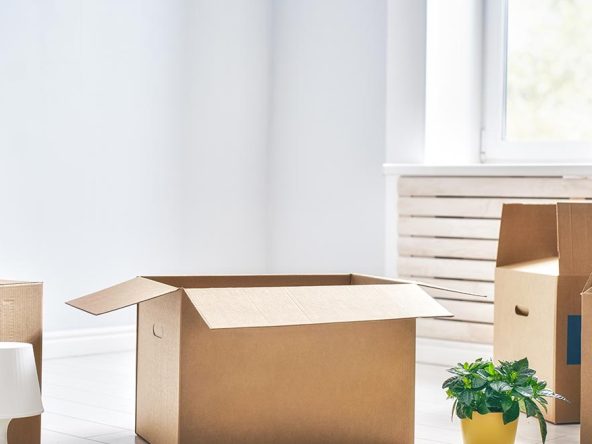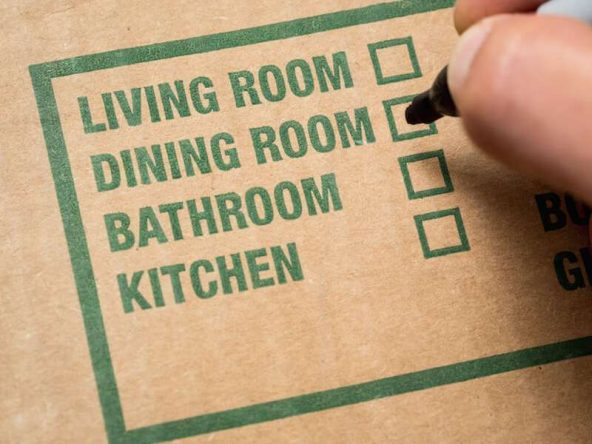Relocating to New York – Moving Guide – New York is an urban wonderland unmatched anyplace in the world, from the Flatiron building to the Brooklyn Bridge. NYC is a bustling metropolis with the greatest population is the nation, home to people from all walks of life, from paint-splattering artists to hard-charging businesspeople.
A potential inhabitant might feel a little intimidated by New York, but that doesn’t have to be the case. Before relocating to any of the five boroughs, this blog will walk you through everything you’ll need, including:
- Demographics
- Living Costs
- Weather
- Transportation
- Culture
NEW YORK CITY DEMOGRAPHICS
New York metropolis is the epitome of a big metropolis, home to almost 10+ million people, and with that many people comes a diversity that few other American cities can match.
This metropolis shifts from block to block, housing a diverse range of ethnicities and culture within its roughly 350 square miles. You may be interested in learning about several important demographics before relocating to New York, including:
- Approximately 42% of the population is foreign-born.
- A language other than English is spoken in about 45% of households.
- More than 53% of people live there are women.
This multicultural city is distinctive for its global influences, offering locals a plethora of chances to broaden their perspective, such as sampling new foods and going to cultural events.
COST OF LIVING IN NEW YORK CITY – Relocating to New York – Moving Guide
The high cost of living in New York City is well-known, partly because of the city’s robust employment market and expanding economy. Here is a list of possible monthly costs you can face in the Concrete Jungle if you’re considering moving to NYC but are concerned about how it would affect your finances:
HOUSING: Whether you’re relocating to NYC, the cost of your living space—a house, condo, or apartment—will probably be the most expensive price on your list. Even though a one-bedroom apartment in Manhattan costs roughly $4,000 a month on average, you are paying to live in the center of the city. There are bridges and tunnels connecting Brooklyn and Queens if you’re looking for something a little less expensive.
PARKING: While it’s not required, you may want to think about the cost of parking if you intend to bring your own vehicle to New York. A permanent parking space costs $450 a month on average for a New Yorker. You should also think about the cost of tolls if you plan to leave the city through a bridge or tunnel. Fortunately, the city offers a wide range of reasonably priced transit choices, including ridesharing, biking, MTA and the subway.
NEEDS, FOOD, AND MEDICAL CARE: The average monthly cost of basics for residents is slightly more than the national average, which is approximately $2,000. Thankfully, greater wages in the city offset increased living expenses.
ENTERTAINMENT COSTS: Both locals and visitors can enjoy the unparalleled entertainment that New York has to offer, from Broadway to Madison Square Garden. Include entertainment expenses in your monthly budget if you intend to spend a few weekends watching concerts or listening to well-known performers. Tickets for Broadway shows often range from $20 to $175, depending on the seat, while Madison Square Garden tickets typically cost $225.
NEW YORK WEATHER REPORT
If you’re coming from a southern area where the winters are milder, you can experience some seasonal shock when December arrives in the city. Though they are renowned for their impeccable style sense, New Yorkers also value practicality when it comes to dressing for the changing seasons.
The city experiences typical wintertime temperatures of 43 degrees Fahrenheit, with lows of 35 degrees. In addition to frequent snow showers, there is often wind cold.
It’s a good idea to get ready in advance if this is your first time moving to the city by locating:
A STURDY WINTER COAT: The bone-chilling winds in New York City will not keep you warm in a flimsy jacket. If you intend to roam the streets from early December to late March, you’ll want something useful, warm, and ideally insulated.
STURDY BOOTS: Nothing is worse in the winter than toeing around in wet socks, so invest in some sturdy winter footwear. You’ll need sturdy enough soles to keep your feet dry throughout the winter, as well as ones that can grip the ground when the pavement is icy.
SCARVES, GLOVES, AND HATS: You may be afraid of hat-hair, but you’ll need all the protection you can get when winter arrives in New York City. This implies that scarves, gloves, and hats are essential accessories.
It’s important to note that the weather isn’t always composed of snow and sleet. Residents of New York City appreciate hot summers with highs of 85 degrees Fahrenheit and high humidity, brisk fall foliage, and pleasant spring temperatures—especially when strolling through Manhattan’s concrete jungle.
OPTIONS FOR TRANSIT IN NEW YORK CITY
There are many ways to go from one end of town to the other in New York metropolis, a metropolis where people are always on the move. The following are some of the greatest ways to get about the city on foot:
FIRST SUBWAY
Many city dwellers utilize the MTA New York subway, the biggest rapid transit system in the world, to get to and from work, appointments, and social gatherings. The subway serves all of New York with 28 train lines, regular stops, and overnight service. It offers several advantages, including:
CONVENIENCE: A subway station is usually seldom more than a few blocks away. Furthermore, there’s no need to pay attention to the road, plan routes, or factor in traffic. All you must do is get on your train, go through the turnstiles, and step away from the closing doors.
COST: A $132 monthly MetroCard pass allows you to take as many rides as you’d like. You’ll arrive at your destination in no time, so make use of the time you have throughout your journey by reading a few pages or listening to your favorite podcasts!
E-BIKES: Despite its reputation for heavy traffic, New York City offers bike lanes for pedestrians who choose to walk on two feet. Cycling is a fantastic choice for:
cycling aficionados
Conscious commuters
Locals who want to see the city more leisurely.
CABS AND RIDESHARE: If you’re searching for the temporary chauffeur convenience, you could want to try taking a taxi or ridesharing vehicle to go to your destination in luxury.
Although ridesharing services and taxis provide comparable services, they differ in a few ways:
- CABS/TAXIS: There are few pictures that evoke New York City quite like hailing a taxi. You can hail a cab on the street in Manhattan or make advance arrangements for a pickup by calling. When you get in a cab, you won’t be able to know the precise fare ahead of time, but you can pay with a card when you get there—just watch the meter.
- RIDESHARE APPS: Although these apps make it easy to book a ride with a few phone clicks, you should be aware of surge pricing. Be mindful of the disparities in price as they can easily double, or treble based on the state of the city.
Ultimately, the decision between a taxi and a rideshare comes down to the type of experience you are looking for: the traditional taxi driver or the modern rideshare. Both are excellent choices.
THE CULTURE OF NEW YORK CITY – Relocating to New York – Moving Guide
Although the diversity of NYC cannot be overstated, certain groups of people tend to frequent the Big Apple and can be described as:
BUSY: Whether for business or pleasure, New York City isn’t exactly a destination for homebodies, particularly given the small size of most apartments. On the streets, people move fast, and although most of them are polite, you shouldn’t expect a wave or a nod from strangers you pass. Everybody has a place to be.
AMBITIOUS: The city of New York exudes ambition. Regardless of your profession—Wall Street trader or Brooklyn painter—you’re constantly searching for the next chance to improve your reputation and broaden your skill set. Taking your work seriously and putting yourself out there is nothing to be ashamed about.
CULTURED: New York is a city for culture enthusiasts, home to more museums than any other place in the world. It’s nearly overwhelming how much famous art there is in New York City. You’ll soon be talking about Van Gough, Monet, and Picasso with your pals as if you’ve known them all your life if you take it slow and steady.
It can be difficult to fit in certain cities, but there are so many people, places, and things to do in New York City that you never have time to think about it. Relax and enjoy the New York City way of life; meeting folks in Central Park or a classy Chelsea club is equally effortless.
WITH ABODE RELOCATION, BECOME A NEW YORK CITIZEN – Relocating to New York – Moving Guide
There are a ton of clichés about New York, but one thing is true: it’s a global metropolis full of unforgettable encounters.
There’s no better way to move to New York than with Abode Relocation when the time comes.
Abode Relocation eases the hassle of house hunting by offering flexible options for furnished apartments in NYC, eliminating the need for leasing agencies and landlords. Look at our New York City apartments or get in touch with us to find out more about the benefits.




